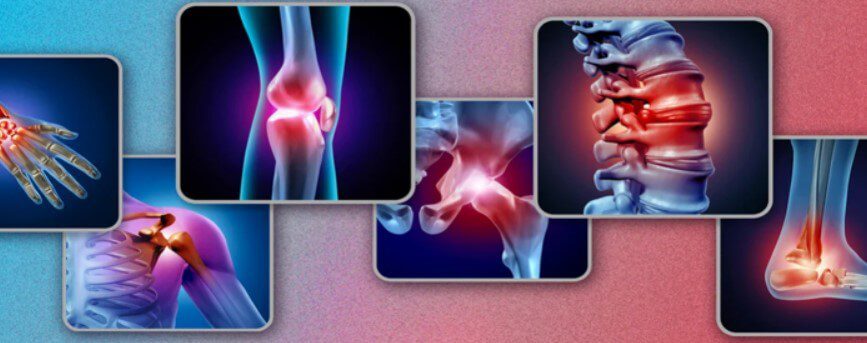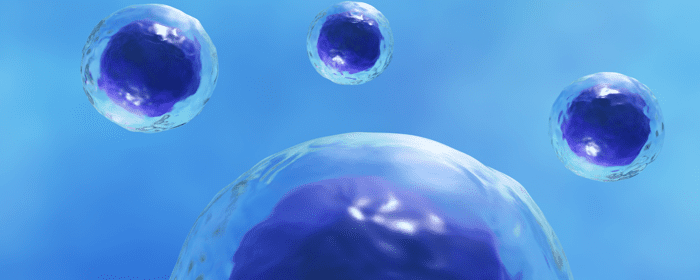
by Stemedix | Apr 22, 2024 | Age Management, Bone Marrow, Health Awareness, Osteoarthritis, Pain Management, Regenerative Medicine, Stem Cell Research, Stem Cell Therapy
As the human body ages, most people assume that “wear and tear” will take over and deplete their health. This isn’t always true, and it’s important to separate fact from fiction when discussing joint health problems.
Osteoarthritis is a painful, inflammatory joint condition that can make it difficult to function. Some folks refer to it as “just” arthritis, but this minimizes the incredible discomfort and damage it causes. Living with this condition can feel impossible at times.
You don’t have to sit back and let joint health problems take over your life as you age. Learn more about osteoarthritis so you can make the best decisions for your health and pain management.
Developing Osteoarthritis: What’s Happening to Your Joints?
Before you can appropriately manage this condition, you must learn what’s happening in your joints. Developing osteoarthritis is not inevitable, but unfortunately, it is common, especially in aging adults.
What Is Osteoarthritis?
Osteoarthritis is an inflammatory joint condition that occurs when the cartilage that supports and connects your bones wears away. As a result, your bones grind together, and the spaces around your joints become inflamed and tender.
Is This Condition Inevitable?
No. Osteoarthritis is not just a “normal” part of aging, nor is it inevitable. As science and research advance, it’s becoming more obvious that osteoarthritis is the result of many risk factors interacting with each other.
Certain risk factors make it more likely that you’ll develop osteoarthritis. Many of them are preventable through lifestyle changes and a proactive approach to protecting your joints.
Who Gets Osteoarthritis?
Age is a big risk factor for osteoarthritis, but again, this condition is not inevitable. Here are some of the risk factors for developing osteoarthritis.
Stress, Strain, and Injury
Any type of strain or stress on your joints can lead to osteoarthritis later in life. Even if your joints feel fine when you’re younger, you’re still at risk if you’ve experienced harsh impacts or prolonged joint strain.
Sports injuries, obesity or being overweight, and physically demanding jobs all put you at a higher risk of developing osteoarthritis. All these risk factors slowly degrade the cartilage between your bones. These tissues can only support lots of impact, weight, or use for so long.
Genetics and Sex
Your genetics play a role in whether you develop joint health problems. Having a family history of osteoarthritis raises your chances of dealing with the same condition.
An estimated 60% of osteoarthritis patients are women. This means that if you were assigned female at birth, you’re at a slightly increased risk of developing osteoarthritis. However, through a healthy lifestyle, you may be able to prevent it.
The Silent Pain of Living with Arthritis
To the outside world, you might appear healthy and fully capable of living your daily life as normal. However, arthritis pain can stop you in your tracks. It can be intense or even disabling.
If your condition gets bad enough, you might find yourself unable to walk around, twist, or pick things up. Osteoarthritis pain is not something to ignore or minimize.
Swelling and Inflammation
The inflammation doesn’t just happen inside your body. Sometimes, your joints may become swollen, tender, and visibly inflamed. When this happens, chances are you can’t move the affected joints much. Any impact, no matter how slight, may throw you into a pain flare.
Crepitus
Some osteoarthritis patients experience a crunching or grinding sensation (crepitus) when moving the affected joints. This can be terrifying and uncomfortable, leading to increased mental stress and physical pain.
Weakness and Limited Mobility
Osteoarthritis causes muscle weakness, fatigue, and limited mobility. You might not be able to move your body in ways that feel good to you or allow you to keep up with others anymore. These limitations not only affect you physically, but they also come with a mental price tag as well.
Stigma and Shame Around Aging
Some people might feel like their osteoarthritis symptoms mean they’re “getting old.” While there should be no shame in aging, social stigmas suggest otherwise. Experiencing these symptoms might make you feel embarrassed about your age.
If you struggle with joint pain, others might not see what you go through. You might feel pressured to “just get over it” or take pain medication to keep up with everyone else. This can also create feelings of shame and contribute to a poor stigma around joint health problems.
Treating Osteoarthritis: Enjoy a Better Quality of Life
Getting an osteoarthritis diagnosis doesn’t mean you’ll never be able to enjoy life and movement again. With the proper therapies, especially early treatment, you can improve your comfort and quality of life. Here are some of the best options for treating osteoarthritis pain and inflammation.
Stem Cell Therapy
Stem cells are at the forefront of regenerative medicine. These cells, also known as “blank” or “programmable” cells, can develop into specialized tissues, like cartilage. This makes them useful for regenerating and healing wounds, damaged tissues, and inflamed areas of your body.
One advantage of stem cell therapy is that it’s drug-free and comes with almost no risks to your health.
Stem cell therapy may also reduce your pain and increase your mobility. It gets to the root cause of your joint problems instead of covering up the symptoms.
Exercise and Physical Therapy
Getting more movement in your day may help reduce the severity of your osteoarthritis symptoms. Regular physical activity prevents the painful stiffness that osteoarthritis patients often experience.
Exercise also assists in weight management, which is key to reducing your joint pain. Every extra pound of body fat adds about four times the amount of pressure onto your joints.
Whether you (gently) exercise on your own or enlist the help of a physical therapist, your joints will thank you for it.
Get the Proper Support for Your Osteoarthritis
Living with osteoarthritis can be challenging, but you’re not alone. There are steps you can take to improve your quality of life with this condition. Evaluate your treatment options to find what works best for you. Visit our website to learn more about osteoarthritis pain.

by Stemedix | Apr 8, 2024 | Age Management, Osteoarthritis, Pain Management, Regenerative Medicine, Stem Cell Research, Stem Cell Therapy
Living with any type of arthritis is painful, debilitating, and frustrating. You miss out on a lot of the physical activities you used to love. This condition can even make it harder to keep up with children and grandchildren.
Your long-term health is worth fighting for. When it comes to osteoarthritis pain management treatments, it’s important to know your options. Here are some pain relief methods to try when managing your osteoarthritis over time.
How Osteoarthritis Develops and Becomes So Painful
The joint pain and inflammation alone can keep you off your feet for days. Along with severe pain, osteoarthritis also causes damage to your cartilage and joints, affecting your mobility and activity levels.
Cartilage Breakdown Leads to Joint Pain
If you’ve dealt with osteoarthritis pain, you might wonder what led you to develop this condition. The root cause of osteoarthritis is cartilage degradation. This means that the rubbery cushion between your bones starts to thin and eventually wear away entirely.
When your joints no longer have adequate cushioning or support between them, they start to rub together. This leads to inflammation, irritation, and intense pain. As the bones rub together, they also break down and lose some of their function.
Risk Factors for Developing Osteoarthritis
There is no single universal cause of osteoarthritis. Certain risk factors can increase your chances of developing this condition. If you have multiple risk factors at once, your chances are even higher.
Some risk factors for developing osteoarthritis include:
These risk factors don’t guarantee you will develop osteoarthritis, but they do play large roles in this condition.
Continuous Inflammation and Discomfort
Osteoarthritis can feel like a never-ending cycle. Once your joints start grinding against one another, you develop inflammation, which leads to even more pain and discomfort.
Over-the-counter anti-inflammatory medications may not resolve your pain, and they certainly don’t treat the root cause of it. In order to experience osteoarthritis relief, you need to prevent the inflammation from occurring in the first place.
At-Home Remedies and Lifestyle Changes
You may be able to control your osteoarthritis pain with lifestyle modifications. This means changing how you move, eat, sleep, and respond to stress in your daily life. Try these at-home therapies and improvements if you want to take the natural pain treatments for osteoarthritis.
Flexibility and Mobility Exercises
You must be careful when exercising with osteoarthritis. Some high-impact activities can make your pain worse. However, strength training, conditioning, and mobility exercises can improve your condition.
Certain stretches and gentle movements can help support your joints and reduce the burden on your bones. This ultimately leads to reduced pain and more mobility over time.
Cold Therapy
Cold temperatures can help reduce inflammation and swelling near your joints. This is because cold conditions trigger a restrictive mechanism in your blood vessels, reducing the blood and fluid supply to the affected areas. If you struggle with inflamed cartilage and joints, cold therapy might be just what you need.
Try applying an ice pack or sitting in an ice bath (with a doctor’s approval) for up to 20 minutes. It’s best to alternate cold and hot applications for the best results.
Heat Therapy
Similar to cold therapy, heat therapy works by changing the blood flow around your inflamed joints and cartilage. Heat opens up your blood vessels, allowing more blood and fluid to reach the affected area. This can supply oxygen, nutrients, and regenerative compounds to your joints.
Alternate applications of hot and cold compresses, using each for up to 20 minutes. You should experience a temporary reduction in swelling and discomfort.
Rest and Sleep
Getting plenty of rest is essential for restoring your joint and cartilage health. Your body needs sleep to rebuild damaged tissues and relieve pain effectively. If your pain is debilitating, try resting the affected area for a few days and catching up on some much-needed shut-eye.
Natural Joint Pain Treatments
From acupuncture to massage, many patients benefit from alternative pain relief therapies. If you want to avoid over-the-counter drugs, these natural pain treatments might be right for you.
Therapeutic Massage
You can perform self-massages at home or go to a licensed professional for these services. Either way, massage has been shown to improve blood circulation to injured areas and relieve some pain and discomfort. You may even notice improvements in your mobility after a restorative massage.
Acupuncture
Acupuncture uses tiny needles to activate trigger points in your body and release tension and pain. Some patients have experienced noticeable improvements in their osteoarthritis pain after regular acupuncture treatments. Contact an acupuncturist to see if this therapy is right for you.
Regenerative Medicine: Stem Cell Therapy for Osteoarthritis Pain
Stem cell therapy is a drug-free alternative you can use to treat your osteoarthritis pain. The potential healing properties of your body’s “blank cells” may lead your joints and cartilage to strength and health again.
How Stem Cells May Relieve Your Pain
Stem cells can be programmed to develop into almost any kind of cell your body needs. In osteoarthritis patients, this means turning them into cartilage tissue.
Stem cells may be able to regenerate damaged soft tissues around your joints, leading to more comfortable movements. This can help you regain some mobility and experience lower pain levels over time.
Low Risk of Side Effects
When you’re dealing with debilitating joint pain, the last thing you want is painful side effects from the treatment you’ve chosen. Stem cell therapy is known for its high safety profile since it uses human cells to regenerate damaged tissues. This means there’s little to no risk of adverse reactions.
Stem cell treatments are fast, generally safe, and potentially very effective at treating osteoarthritis pain. If you want to try a new avenue for joint pain relief, consider regenerative medicine.
Tackle Your Arthritis Pain Your Way
You have the final say in how you treat your osteoarthritis pain. Whether you opt for natural at-home remedies or test out regenerative medicine, what’s important is that you have choices. Take control of your health and mobility again with these pain management treatments for osteoarthritis.

by Stemedix | Mar 25, 2024 | Osteoarthritis, Pain Management, Regenerative Medicine, Stem Cell Research, Stem Cell Therapy
Living with osteoarthritis pain can be debilitating. You might feel barred from activities you previously enjoyed. With osteoarthritis, everything feels more difficult, including playing with your grandkids, enjoying sports, and walking in nature.
Addressing osteoarthritis pain involves a combination of lifestyle changes, modern scientific therapies, and medications. Here are some of the ways you can get relief from the pain and discomfort osteoarthritis brings to your life.
The Root Cause of Osteoarthritis
Arthritis is an inflammatory joint condition that currently has no cure. If you have osteoarthritis, your body experiences cartilage degeneration. This means the spongy tissue that connects your bones together is starting to break down.
Bone Friction and Damage
When enough cartilage is lost, the friction of your bones rubbing together causes pain, inflammation, and discomfort. Your ligaments start to stretch in painful, unhealthy ways.
Osteoarthritis operates in two ways. Cartilage breakdown causes bone friction, which increases your pain levels. Bone friction also causes serious bone damage that worsens your pain.
Because of these stressors, osteoarthritis pain can be debilitating. This condition can be progressive, getting worse as your joints and ligaments become stressed due to lack of cartilage. If you get proper treatment, however, you may get rid of your symptoms altogether.
There are a few risk factors for developing osteoarthritis. With proper treatment, you can go into remission and experience far fewer painful symptoms.
Who Gets Osteoarthritis?
What causes your cartilage to break down in the first place? The answer is more complex than you might expect. Some people are more susceptible to joint and cartilage damage than others.
Older Adults
Age is a major risk factor for developing osteoarthritis. Patients who are 40 or older are more likely to develop this condition.
Throughout your life, your joints and connective tissues experience “wear and tear,” and the effects accumulate as you age. This can create problems with your cartilage’s structural integrity, eventually leading to osteoarthritis. It makes sense that aging adults experience higher rates of this inflammatory health condition.
People With Sudden Injuries
You may develop osteoarthritis if you’ve experienced a sports injury or sudden joint impact. Injuries can harm the cartilage that connects your joints, increasing your risk of developing this condition.
If you’re an older adult who played sports in your younger years, you may notice symptoms of osteoarthritis popping up as you age. Car crash victims and people with traumatic joint injuries are also vulnerable.
Obese Patients
Obesity raises your risk for this degenerative disorder. The more extra fat you carry, the more stress and pressure your joints experience. Over time, excess body weight can break down connective tissues in your knees, legs, and feet.
Since osteoarthritis is an inflammatory condition, being obese can exacerbate the symptoms. If you eat a poor diet full of processed foods and refined sugars, your body is more vulnerable to inflammation. These conditions make osteoarthritis symptoms even more debilitating.
How to Get Relief from Osteoarthritis Pain
The joint pain and discomfort that come with osteoarthritis can impair your daily life. If you like to be active and move around a lot, this disease may force you to change your lifestyle. Luckily, you have options when it comes to osteoarthritis pain relief.
From over-the-counter pain medications to natural holistic remedies, there’s no shortage of osteoarthritis pain relief. You can choose what works best with your personal preferences and lifestyle.
Pharmaceutical Treatments
Most physicians recommend over-the-counter anti-inflammatory drugs to manage osteoarthritis pain. If you have debilitating discomfort, some doctors will prescribe stronger pain medication. These treatments are usually intended for short-term use.
While medication covers up the pain you’re experiencing, it doesn’t solve the underlying problem. You likely won’t get long-term relief from medication alone.
Stem Cell Therapy
Stem cell treatments for osteoarthritis may reduce inflammation and pain over time. This evidence-based therapy uses special “blank” cells to regenerate damaged tissues. Since osteoarthritis is a degenerative condition, stem cell therapy is a potentially effective solution to cartilage breakdown.
Stem cells come from the human body. These treatments are completely drug-free and use the natural powers of your body’s wound-healing process. Patients who seek stem cell therapy for osteoarthritis may notice significant improvements in their comfort levels after a few weeks.
Specialized Massage
Massages can help improve blood flow to the affected areas. As a result, massage therapy may be a good supplemental tool for relieving osteoarthritis pain.
Many people experience better mobility after a few massage therapy sessions. A massage therapist specializing in osteoarthritis pain relief can help you feel more comfortable and mobile in your daily life.
Acupuncture
Acupuncture is a holistic solution for joint pain osteoarthritis causes. Patients from different backgrounds and with various health problems have experienced pain relief from acupuncture. This therapy uses tiny needles to relax your muscles and redirect your brain’s pain signals.
Acupuncture should be used as a supplement to other types of therapy. It can provide short-term relief, but much like medication, it doesn’t treat the root cause of your osteoarthritis pain.
Lifestyle Changes
Lifestyle changes offer effective, natural solutions to your daily discomfort. Nutrition, weight, sleep, and stress management all play large roles in osteoarthritis pain relief.
Your body needs the right nutrients to control inflammation and accelerate wound healing. You also need plenty of sleep and stress management to maintain a healthy body. Any or all of these factors can improve or worsen your osteoarthritis pain.
As a rule of thumb, you should prioritize:
- Healthy weight management
- Good nutrition
- Sleep quality and quantity
- Stress relief
- Gentle daily exercise
These lifestyle factors will all help your body recover from osteoarthritis attacks. You may be able to prevent the inflammation from getting worse by improving these areas of your life.
Experience Osteoarthritis Pain Relief to Enjoy Healthy Movement Again
You’re understandably ready to get back to doing what you love. Managing your osteoarthritis pain doesn’t have to take over your life. Live a healthy lifestyle as you consider different therapies and treatments to take the edge off of your joint pain.

by admin | Feb 15, 2024 | Osteoarthritis, Exosomes, Extracellular Vesicles, Mesenchymal Stem Cells, Stem Cell Research, Stem Cell Therapy
Osteoarthritis (OA) is the most common form of arthritis and is estimated to affect nearly 365 million people worldwide. Characterized as an inflammatory disease, OA slowly progresses over time and results in the gradual loss of the protective cartilage found on the ends of the bones.
While the specific cause of OA has yet to be determined, a growing body of evidence suggests the chondrocyte inflammatory response resulting from elevated levels of pro-inflammatory cytokines is a critical factor in the development and progression of OA.
Recent evidence also suggests that mesenchymal stem cell-derived exomes (MSCs-Exos) exhibit beneficial anti-inflammatory responses in several inflammatory diseases, including OA.
In this study, Wang et al. explore the role of human umbilical cord-derived MSCs-Exos (hUC-MSCs-Exos) in treating the inflammation of chondrocytes and its related mechanisms.
As part of this study, the authors report that supplementing the observed chondrocyte inflammation models with hUC-MSCs-Exos demonstrated the ability to reduce the inflammation of chondrocytes caused by the inflammatory factor IL-1β.
Additionally, activation and polarization of synovial macrophages to M1 phenotypes also contribute to the progression of OS. As part of this study, Wang et al. report that hUC-MSC-Exos demonstrated a protective effect against M1 macrophage-induced chondrocyte damage and cell death.
Wang et al. indicate that the results of this study confirm the anti-inflammatory effects of hUC-MSCs-Exos in the human articular chondrocytes inflammation model. The authors also conclude that hUC-MSCs-Exos may be used as a potential cell-free treatment for chondrocyte inflammation in OA.
Source: Wang S, Jiang W, Lv S, et al. Human umbilical cord mesenchymal stem cells-derived exosomes exert anti-inflammatory effects on osteoarthritis chondrocytes. Aging (Albany NY). 2023;15(18):9544-9560. doi:10.18632/aging.205034

by Stemedix | Feb 12, 2024 | Age Management, Health Awareness, Osteoarthritis, Pain Management, Regenerative Medicine, Stem Cell Therapy
The National Library of Medicine states that 10% of people over 55 in the United States have disabling knee osteoarthritis. If you are one of these people, finding the right treatment can be challenging, especially if you don’t want to become dependent on pain medications or go through an invasive knee surgery.
For some, surgery can be the only option, but for many others, some management strategies and less invasive options could offer relief from symptoms.
What Is Knee Osteoarthritis? Understanding the Symptoms and Causes
Osteoarthritis of the knee occurs when the cartilage in your knee joint starts to break down. This causes the bones to rub together, leading to stiffness, swelling, and pain that can interfere with your life.
Women are more likely to develop knee osteoarthritis, as are people over the age of 40, but genetics and other factors can cause it in younger people.
Pain is the most common symptom of this condition, but there are other signs, including:
- A puffy or swollen knee
- Hearing a grinding or cracking noise when you move
- Knee stiffness
- Knee that locks up or feels stuck
- Knee that feels wobbly
There can be many causes of knee osteoarthritis. Having a body mass index of 30 or more puts pressure on your knees and can cause inflammation. This inflammation can lead to arthritis or make existing arthritis worse.
You can also develop this condition if you suffer a knee injury or have a prior knee injury. If you have close relatives who’ve had knee osteoarthritis, you’re also more likely to struggle with this problem.
If you frequently put stress on your knees, whether by playing sports or as a result of your job, you can also develop osteoarthritis in your knee.
Treating Knee Osteoarthritis
If you have signs of osteoarthritis, there are a number of treatment options you can talk to your doctor about.
Maintaining a Healthy Weight
If you have risk factors that can increase your chances of developing knee osteoarthritis or if you already have the condition, ensuring your weight is healthy is vital. The Arthritis Foundation states that being just 10 pounds overweight can put 15 to 50 pounds of extra weight on your knees. That makes the development of osteoarthritis more likely.
Losing weight allows you to reduce some of that strain on your knee joints. Aside from that, losing weight also helps reduce inflammation throughout the body, which can help with arthritis.
Getting Regular Exercise
Those who have knee osteoarthritis can also benefit from getting regular exercise. It can help you lose weight, increase your mobility, and build up muscle strength to support your knee joints.
It is important to choose low-impact aerobics options that are suitable for your health level. These can include:
- Swimming
- Cycling
- Yoga
- Stretching
- Walking
Riding a stationary bike can be very helpful for maintaining strength in the hamstring muscle groups without putting extra pressure on your knee. It’s best to have a doctor or physical therapist at your side to help you put together an exercise plan.
Using Medications for Pain and Swelling Relief
For people who are dealing with a lot of pain and swelling, one option is to turn to medications. Over-the-counter painkillers are one option, and many of them offer anti-inflammatory properties that help with the swelling that might be impeding you from moving freely.
Non-steroidal anti-inflammatory drugs (NSAIDs) like ibuprofen, as well as acetaminophen for those who can’t take NSAIDs, can be helpful for osteoarthritis pain.
If these aren’t effective, there are prescription options your doctor could recommend. These may include opioids and even injectable steroids for people with severe inflammation.
Prescription medications can cause side effects. Because they don’t actually do anything to heal your body and only help you manage the symptoms of knee osteoarthritis, the moment you stop taking them, the pain and inflammation will usually return.
Turning to Regenerative Medicine
One promising option for the treatment of knee osteoarthritis is regenerative medicine. It is a field of medicine that strives to harness the body’s natural healing powers to make them work in the areas where you need them most. There are a number of treatments, including platelet-rich plasma therapy and stem cell therapy.
Platelet-rich plasma (PRP) therapy uses the platelets in your blood, which have clotting abilities and can stimulate many healing processes.
By separating the platelets from the other components in your blood, like white blood cells, red blood cells, and more, and concentrating them in the liquid portion of your blood, you can give the treatment area a boost of growth factors. These growth factors encourage the healing process.
Stem cell therapy uses stem cells gathered from your fat or bone marrow to stimulate the regeneration of damaged tissue. Stem cells have endless regenerative powers, and they’re able to transform into the exact type of cells you need.
Regenerative medicine offers the chance to decrease inflammation in the area, allowing blood to flow more freely and bring with it oxygen and nutrients. Less inflammation can also mean less pain because you aren’t putting as much pressure on nearby nerves.
Another benefit of regenerative medicine is that it is minimally invasive, so you don’t have to worry about a long recovery period. Most people are good candidates for this type of procedure as well.
Choosing Surgery
In severe cases, surgery may be the only way to treat knee osteoarthritis. You can get arthroscopic surgery, which is less invasive because it uses an arthroscope. This is a small camera that guides the surgeon in repairing the damaged area.
A total knee replacement can be another option. It can be done as minimally invasive or open surgery, depending on your overall health.
Stem cell therapy can still apply as a post-surgery option to help speed up recovery and manage inflammation and pain during the healing process.
Getting Relief from Knee Osteoarthritis Symptoms
If you are struggling with knee osteoarthritis, getting relief from the inflammation and pain can mean considering all available treatment options. By turning to your doctor, you can make sure you have the best chance of achieving the help you deserve.

by admin | Feb 8, 2024 | Osteoarthritis, Mesenchymal Stem Cells, Stem Cell Research, Stem Cell Therapy
Osteoarthritis (OA) is the most common form of arthritis and occurs as a result of the protective cartilage, found on the ends of the bones, degenerates over time. While OA can occur in any joint, it is most commonly found to occur in the hands, hips, spine, and knee.
An estimated 365 million people worldwide are currently living with some form of knee OA. Although there have been improvements in conventional treatment methods that have shown some benefit, there is no therapy or drug that can prevent or treat the development of OA in the knee.
Recent phase I/II trials using mesenchymal stromal cells (MSCs) derived from bone marrow (BM) and adipose tissue have demonstrated the feasibility, safety, and clinical and structural improvements in focal or diffuse disease.
Considering the findings of these phase I/II trials, Orrego et al. conducted this study to better assess the safety and efficacy of the intra-articular injection of single or repeated umbilical cord-derived (UC) MSCs in knee OA.
The target population of this study was individuals between the ages of 40-65 with symptomatic knee pain for at least 3 months with grade 1-3 Kellgren-Lawrence radiographic changes in the targeted knee, without meniscus rupture.
The authors divided participants of this study into three specific groups, a control group which received intra-articular knee injections of hyaluronic acid (HA) at baseline and 6 months; the MCS-2 group, which received UC-MSCs at baseline and 6 months; and the MSC-1 group, who received UC-MSCs at baseline followed by placebo injection at 6 months.
At the conclusion of this study’s 12 months follow-up period, Orrego et al. found that the group with repeated UC-MSC intra-articular injections, or MCS-2, experienced significant clinical changes in total WOMAC, pain component, and VAS when compared with the control group. The authors also found that only patients in the MSC groups experienced significant amelioration of pain and disability at 6 and 12 months. The authors also reported no safety signals were detected in the experimental groups as compared with the HA controls.
Considering these findings, the authors conclude that the use of MSCs produces anti-inflammatory properties in response to tissue damage or inflammation that demonstrates suppressive effects on the maturation of dendritic cells, macrophages, Natural Killer, and cytotoxic T-lymphocytes.
While these results appear promising, the authors point out that even if all MSC trials report a good safety record and improvements in cartilage quality, the use of autologous cell therapy does come with some limitations. Among these limitations include a dramatic decline of bone precursor cells when these cells are derived from bone marrow. Studies have also shown reduced chondrogenic activity of MSCs in cultures obtained from individuals with advanced forms of OA. For these reasons, and considering the findings in this study, the authors highlight that allogeneic sources of MSCs have been shown to express superior clonogenicity, migration, and paracrine capacities.
The authors conclude that the repeated UC-MSC dose strategy utilized in this study led to a favorable safety profile and improved clinical results for the treatment of long-term pain in knee OA patients.
Source: Jose Matas, Mario Orrego, Diego Amenabar, Catalina Infante, Rafael Tapia-Limonchi, Maria Ignacia Cadiz, Francisca Alcayaga-Miranda, Paz L. González, Emilio Muse, Maroun Khoury, Fernando E. Figueroa, Francisco Espinoza, Umbilical Cord-Derived Mesenchymal Stromal Cells (MSCs) for Knee Osteoarthritis: Repeated MSC Dosing Is Superior to a Single MSC Dose and to Hyaluronic Acid in a Controlled Randomized Phase I/II Trial, Stem Cells Translational Medicine, Volume 8, Issue 3, March 2019, Pages 215–224, https://doi.org/10.1002/sctm.18-0053







 St. Petersburg, Florida
St. Petersburg, Florida
